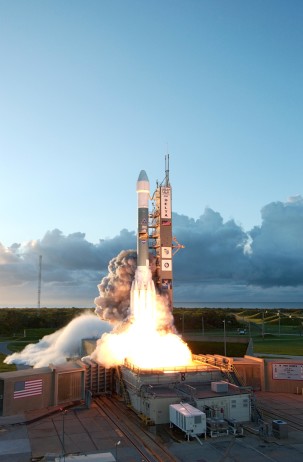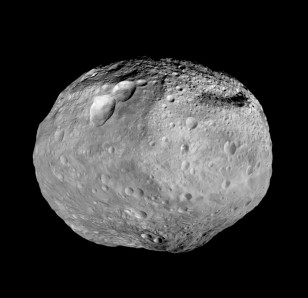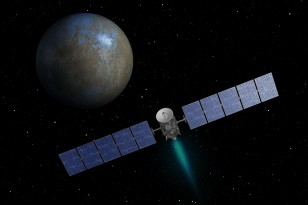NASA’s Dawn spacecraft is getting set for the final segment of its planned ten-year mission after entering the approach phase of its visit to the dwarf planet Ceres.
This dwarf planet, with an average diameter of 950 kilometers, is the largest object in the asteroid belt, a region of space located between the orbits of Mars and Jupiter filled with debris of all sizes left over from the creation of the solar system.
Mission officials say that Dawn is scheduled to enter orbit with Ceres in March to study and photograph the celestial object up close.
When Dawn enters its orbit around Ceres, NASA says that the spacecraft will become the first ever to circle two solar system targets.
According to NASA, the Dawn spacecraft is about 640,000 kilometers from the dwarf planet target and is traveling at a speed of around 725 kilometers per hour.

NASA’s space probe Dawn, sitting atop a Delta II rocket, begins its journey on 9/27/2007 to study two of the solar system’s largest asteroids. (NASA)
Dawn, launched from Florida’s Cape Canaveral Air Force Base in 2007, already completed half of its mission back in 2012 after spending 14 months visiting and exploring Vesta, the second largest object in the asteroid belt. Scientists also refer to Vesta as a minor planet named Vesta 4.
“Ceres is almost a complete mystery to us,” said Christopher Russell, principal investigator for the Dawn mission, in a NASA press release. “Ceres, unlike Vesta, has no meteorites linked to it to help reveal its secrets. All we can predict with confidence is that we will be surprised.”
Before entering its approach phase with Ceres, the spacecraft was in a solar conjunction, meaning it was on the other side of the sun from us. With the sun right in the middle between Earth and Dawn, those involved with its mission had limited contact with the spacecraft.
But since the sun is no longer blocking Dawn from Earth and reliable communications have been re-established, mission controllers are able to program the spacecraft’s computers with the maneuvers necessary to safely and effectively guide it to Ceres.
With its unique ion propulsion system, NASA says that the Dawn spacecraft is able to travel to its destinations much more efficiently than if it had been equipped with a traditional chemical based propulsion system.

A full view of Vesta composed of mosaic of images taken by the Dawn space probe in September, 2012 (NASA/JPL-Caltech/UCLA/MPS/DLR/IDA)
Because of this efficient method of propulsion Dawn has been able to travel through the cosmos with a higher amount of thrust time than any other spacecraft.
“Orbiting both Vesta and Ceres would be truly impossible with conventional propulsion. Thanks to ion propulsion, we’re about to make history as the first spaceship ever to orbit two unexplored alien worlds,” said Marc Rayman, Dawn’s chief engineer and mission director, based at NASA’s Jet Propulsion Laboratory in Pasadena, California.
Scientists think that Ceres may have formed later and may have a cooler interior than Dawn’s first target asteroid, Vesta.
Recent research suggests that since it formed earlier, when radioactive material was more plentiful, Vesta was able to produce more heat than Ceres and retain only a small amount of water. On the other hand, scientists believe that Ceres is covered with thick mantle of ice and could even have an ocean tucked under its frigid crust.
NASA says that as Dawn comes closer and closer to Ceres, the spacecraft’s cameras will be able to provide some of the best images ever taken of the dwarf planet.
NASA/JPL video explaining Dawn’s Ion Propulsion System





















It has been a pleasure to be alive in this space age. I stayed awake most of the first moon shot. I taped the whole launch on an old 1960 reel tape recorder.